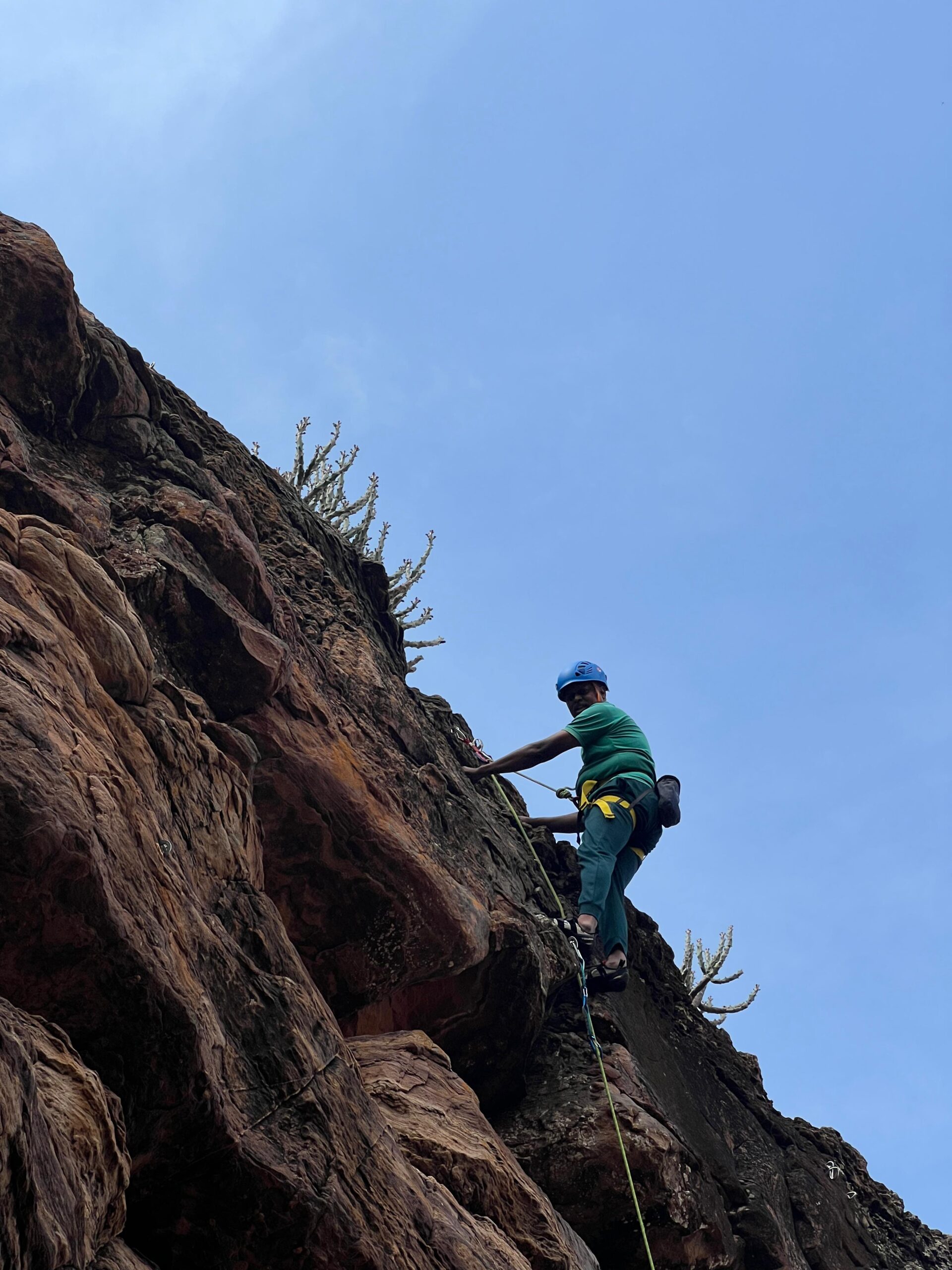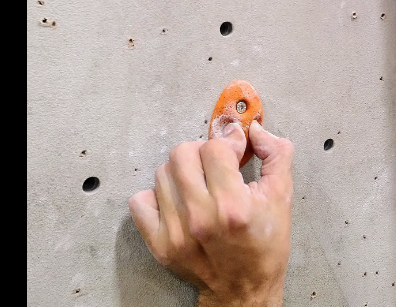Beginner’s Guide to Rock Climbing: Understanding Disciplines and Getting Started
Rock climbing offers a variety of disciplines, each suited to different interests and skill levels. Whether you’ve envisioned climbers scaling towering cliffs or tackling indoor walls, there’s a perfect entry point for everyone. This guide will walk you through the basics, helping you explore climbing with confidence.
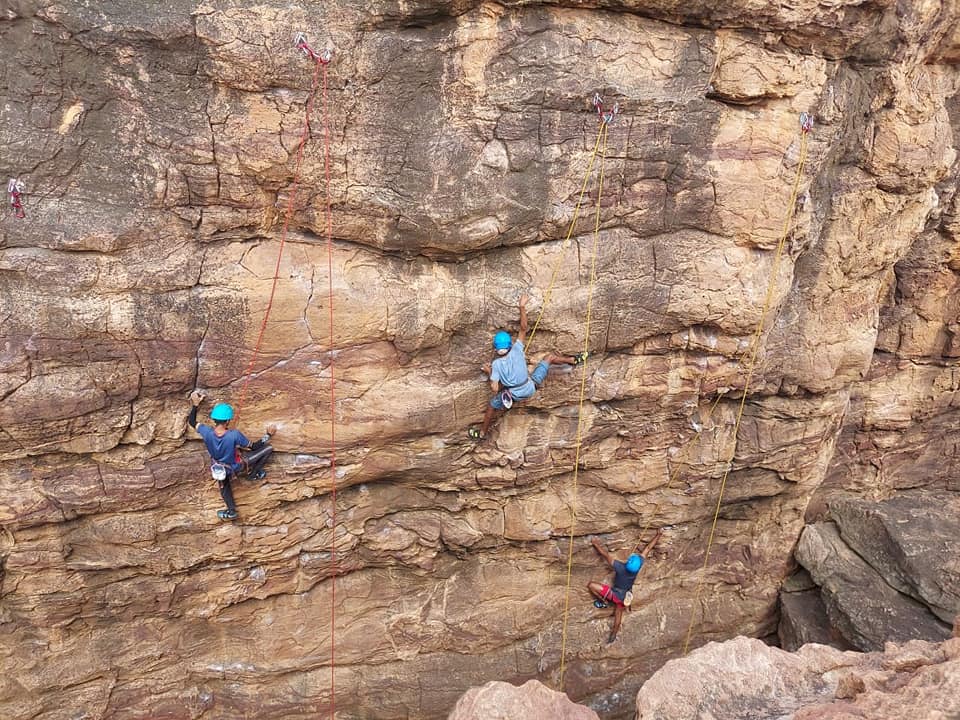
Step 1: Discover the Different Climbing Disciplines
Rock climbing encompasses multiple styles, each requiring specific gear and techniques. Beginners often start with bouldering or top-rope climbing, either indoors or outdoors. Here’s an overview:
Bouldering
Bouldering is a minimalist style of climbing that focuses on short routes, typically close to the ground. You’ll encounter “problems,” which are sequences of movements to reach the top. The simplicity of bouldering makes it an ideal entry point, requiring minimal gear:
- Climbing shoes
- Chalk bag
- Crash pad (to cushion falls)
- Spotters to guide your landings
Since no ropes or harnesses are needed, it’s a great way to develop your strength and technique.
Top-Rope Climbing
Top-rope climbing involves ascending higher walls with the security of a rope. The rope is anchored at the top of the route, with a belayer managing the rope from below. This style provides a safety net, allowing climbers to push their limits with minimized risk. You’ll learn key skills like belaying, knot tying, and climbing commands during introductory classes.
Step 2: Try It Out
Both bouldering and top-rope climbing can be experienced indoors or outdoors. Indoor climbing gyms offer a controlled environment with pre-set routes, padded floors, and professional guidance—ideal for beginners. Many gyms also provide equipment rentals, making it easy to start climbing without upfront investment.
Indoor Bouldering
Perfect for beginners, indoor bouldering requires minimal gear. Routes, marked by color-coded holds, cater to various skill levels. You can start with a quick orientation, rent climbing shoes, and get climbing immediately. The social atmosphere in gyms often makes problem-solving a collaborative experience.
Indoor Top-Roping
Top-rope climbing in a gym is equally beginner-friendly, but it requires a belayer, either an experienced partner or an auto-belay device. Most gyms offer basic classes to teach belaying skills, ensuring safety and fun for all climbers.
Step 3: Learn Essential Skills
Once you’re comfortable with basic climbing, consider taking a class to refine your skills. Instructors or guides can teach you crucial techniques, including:
- Knots: The Figure-8 Follow Through is the most common knot used to tie into a climbing rope.
- Belaying: Learn how to manage the rope, catch a climber’s fall, and lower them safely.
- Commands: Communicate effectively with your climbing partner using standard climbing commands.
- Movement Techniques: Understand how to use your legs for power and maintain balance on the wall.
Step 4: Gear Up for Climbing
As a beginner, most of the gear you’ll need is typically provided by climbing gyms or rental services. However, here’s what to consider if you want to invest in your equipment:
Essential Gear
- Climbing Shoes: Ensure a snug fit for better grip and precision.
- Chalk: Keeps hands dry for a secure grip.
- Harness (for roped climbing): Secures you to the rope.
- Helmet (for outdoor climbing): Protects against falling debris.
- Belay Device and Locking Carabiner: Used for managing the rope safely.
Step 5: Practice and Progress
The more you climb, the more you’ll improve. Start with beginner-friendly routes (e.g., 5.1–5.5 in the Yosemite Decimal System) and gradually challenge yourself. Indoor gyms often use the V Scale for bouldering, starting at V0 (easiest) and increasing in difficulty.
To deepen your skills, try climbing outdoors with a guide or experienced climber. You’ll learn to navigate natural routes, handle outdoor-specific gear, and manage variables like weather and rock conditions.
Rock climbing is as much about personal growth as it is about physical fitness. Whether you’re solving bouldering problems or scaling high walls with ropes, the journey is thrilling and rewarding. So gear up, find a climbing gym or outdoor spot near you, and embrace the adventure!
A Beginner’s Guide to Rock Climbing: From Safety Tips to Choosing Your Style
Rock climbing has evolved from a niche sport to a mainstream activity, making its way from epic tales of climbers on the Dawn Wall to gyms and Instagram feeds worldwide. With kids starting to climb as early as they can walk, there’s never been a better time to give it a try. However, climbing can seem daunting to newcomers. Questions about gear, safety, and how to start often create barriers. Here’s a comprehensive guide to help you get started on the rock with confidence.
A Beginner’s Guide to Rock Climbing: From Safety Tips to Choosing Your Style
Rock climbing is a thrilling and rewarding sport that can be as mentally challenging as it is physically demanding. Whether you’re looking for a full-body workout, an exciting outdoor adventure, or a way to challenge yourself, rock climbing offers something for everyone. As a beginner, it’s essential to start with the right information to ensure safety and build a solid foundation. This guide will help you understand the different climbing styles, essential safety tips, and how to begin your climbing journey.
Step 1: Understand the Different Climbing Styles
Rock climbing has various disciplines, each with unique techniques and required gear. The two most common types for beginners are bouldering and top-rope climbing, but as you gain experience, you may explore other forms like sport climbing and trad climbing.
Bouldering
Bouldering is an excellent starting point for many climbers. It involves climbing short, yet challenging routes (called “problems”) on smaller rock formations or indoor climbing walls. Typically, bouldering is done without ropes, and climbers use crash pads to protect themselves in case of falls. It’s a great way to develop strength, technique, and problem-solving skills.
What You’ll Need:
- Climbing shoes
- Chalk bag
- Crash pad
- Spotters (for safety)
Since you don’t need ropes or harnesses, bouldering is one of the easiest climbing styles to try for beginners.
Top-Rope Climbing
Top-rope climbing allows you to ascend taller walls with the added safety of a rope. The rope is anchored at the top, and a belayer controls the rope from the ground, preventing long falls. This style is ideal for beginners because the belayer can catch you if you slip. Many indoor gyms offer top-rope climbing, making it a safe way to get started.
What You’ll Need:
- Climbing shoes
- Chalk bag
- Climbing harness
- Belay device and locking carabiner
- Helmet (for outdoor climbs)
Step 2: Safety First – Essential Tips
Safety is paramount in rock climbing. Understanding the risks and taking precautions can prevent accidents and injuries. Here are some critical safety tips for beginners:
1. Learn Basic Climbing Commands
Clear communication between the climber and belayer is essential. Climbers and belayers use specific commands to ensure safe operation. Common climbing commands include:
- “On belay?” (climber asks if the belay is ready)
- “Belay on!” (belayer confirms they are ready)
- “Climbing!” (climber indicates they are starting)
- “Take!” (climber asks the belayer to take in slack)
- “Slack!” (climber requests more rope slack)
2. Double-Check Your Gear
Before you start climbing, always check that your harness is securely fastened, the rope is properly threaded through the belay device, and all carabiners are locked.
3. Practice Falling Safely
If you’re bouldering, falling is part of the sport. Always try to fall in a controlled way—aim to land on your feet or back, and use the crash pad to absorb the impact. In top-rope climbing, trust your belayer to catch your fall, but always try to avoid taking big risks early on.
4. Start with Easier Routes
It can be tempting to tackle a challenging route, but as a beginner, it’s better to start with easier problems or routes (rated 5.1-5.5 or V0-V2). This will help you build confidence and develop your technique without overwhelming yourself.
Step 3: Practice, Practice, Practice
The best way to progress in rock climbing is to get hands-on experience. Here’s how to continue improving your skills:
1. Take a Class or Hire an Instructor
If you’re new to climbing, an introductory class is a great way to learn proper technique, safety practices, and basic skills. You’ll learn how to belay, tie knots, and understand climbing commands. Classes are often available at indoor climbing gyms, and instructors will ensure you’re learning in a safe environment.
2. Try Indoor and Outdoor Climbing
Indoor climbing gyms provide a controlled, convenient space to learn climbing techniques and practice regularly. Outdoor climbing adds a level of unpredictability, but it also offers stunning natural scenery. If you’re interested in outdoor climbing, consider going with an experienced guide or joining a climbing group.
3. Use Your Legs More Than Your Arms
Many beginners rely too much on their arms when climbing, but it’s important to use your legs to push yourself up. Focus on improving your footwork and balance, which will help you conserve energy and make climbing easier.
Step 4: Choosing the Right Gear
Having the right gear can make your climbing experience safer and more enjoyable. Here’s an overview of the essential gear you’ll need as a beginner:
Climbing Shoes
Climbing shoes are designed to provide maximum friction and precision on the rock. When choosing shoes, ensure they fit snugly but comfortably, as this will improve your footwork and climbing technique.

Climbing Harness
A harness is crucial for top-rope climbing. It connects you to the rope and supports your weight if you fall. Make sure the harness fits well and is adjusted properly.
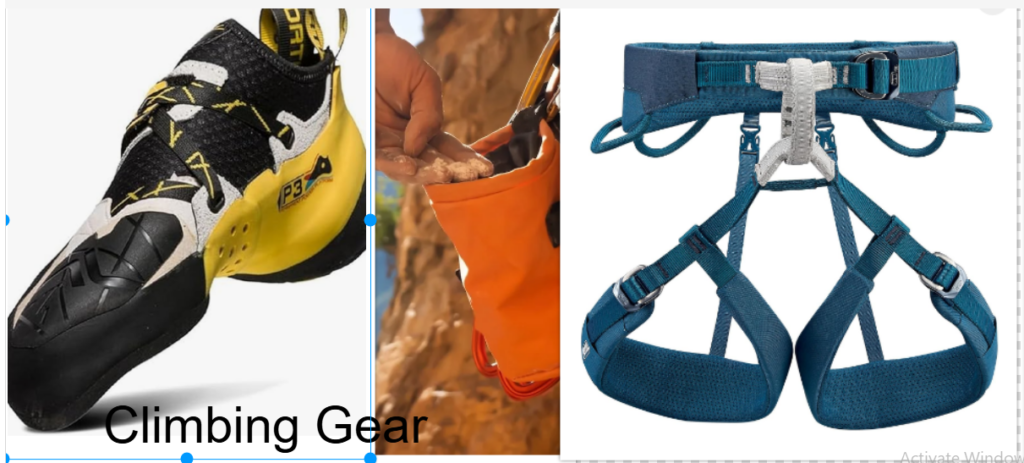
Chalk Bag
Chalk helps keep your hands dry and improves your grip while climbing. A chalk bag is usually worn around the waist for easy access.
Helmet
A climbing helmet protects your head from falling rocks or accidental bumps. It’s essential for outdoor climbing, but some gyms may not require them indoors.
Belay Device
If you’re planning to top-rope climb, a belay device is necessary for controlling the rope. It allows the belayer to catch the climber in case of a fall.
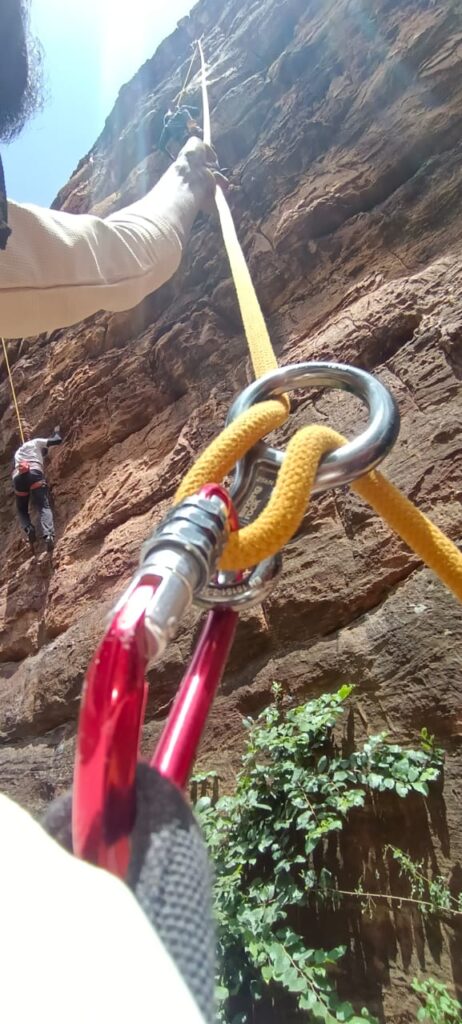
Step 5: Have Fun and Stay Motivated
Climbing is about more than just physical strength; it’s also a mental challenge. Each route or problem is like a puzzle that you must figure out, and there’s a great sense of accomplishment when you complete it. Stay motivated by setting small goals and tracking your progress.
Climbing is also a social sport. Many climbers enjoy the camaraderie and community, whether they’re working through problems with a friend or participating in climbing groups. The more you climb, the more you’ll improve and enjoy the sport!
Conclusion: Your Climbing Journey Begins Here
Rock climbing is a fun and fulfilling sport that offers endless opportunities for adventure, fitness, and personal growth. By understanding the basics of the different climbing styles, following safety guidelines, and investing in essential gear, you’re well on your way to becoming a confident climber.
Remember, practice is key to improvement. Start slow, focus on technique, and enjoy the experience. Whether you’re bouldering indoors or top-roping outdoors, each step you take in your climbing journey will bring you closer to mastering the sport.
For more climbing resources, gear recommendations, and training tips, visit Alpinia Hub. Happy climbing!
